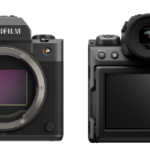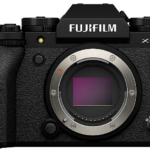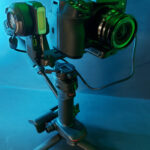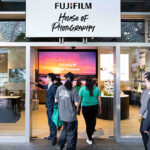Holden and Ford. Mac and Windows. Big Mac and the Whopper.
The world is full of products where there are camps on two sides of a fence. And so it is with cameras.
Nikon and Canon.
But thankfully as I have discovered, that is not where the story ends at all, as sitting in the wings and more than able of slugging out with these two is Fujifilm. And in this particular case, the Fujifilm GFX50SII.
And having had a play for a few weeks, I am impressed and suggest that anyone looking for a large format camera also put this on the “must have a look” list alongside the probable Nikons / Canons you intend to take a gander at.
So what do you get?
Well for starters, it has a 51 megapixel 44 x 33mm CMOS sensor that has a “pixel shift” hi-res mode to give 205 megapixel images. This means you can stack 16 images together and each has had a fractional shift of the sensor.
And to keep things nice and steady there is 5 axis in-camera stabilisation, although I think I’d be using a tripod when trying this.
For film makers, you get full HD 1920 x 1080 at 29.97/25/24/23.98 and 50fps of up to 120 minutes (depending on the size of the SD card of course.). Fujitsu also says this recording time is dictated by ambient conditions however.
Almost mandatory for filmmakers, there are separate headphone and mic sockets.
Note though, there is no 4K.
I won’t bore you with a detail of all the specifications – of which there is a lot – as they can be seen here.
Ergonomics
Instead, I am more interested in the physical characteristics of the GFX 50SII.
The body is fitted with a Fujitsu G mount which means you have access to a decent range of lenses. My review unit came with a 35-70mm which I had intended to use with the MSM star tracker, but as luck would NOT have it, for the period of the loan all we got was either cloudy skies or ones filled with smoke from bushfire burn off!
In the hand the GFX 50SII is solid without being too heavy. And with the 35-70 lens is nicely balanced I feel.
There is only a single rotary dial that is dedicated to exposure mode thus freeing up space on the top of the body of the camera for a large sub-LCD. Other controls include a thumb wheel on the rear and a selection of buttons for tasks such as the Main Menu, drive selection, AEL, AF and display. And of course the GFX 50SII has the famed Fujifilm Q setting for customisation of controls.
The large touch screen LCD on the rear of the camera extends out as well as being dual tiltable and is very clear and crisp. The viewfinder is fixed however, and I would have liked it to also have a tilt capability.
Ancillary port access (USB, mini-HDMI, audio, charging etc) is via flaps on the left and the twin SD card slots are similarly accessed on the right. The battery is covered by a bottom access hatch and a hot shoe is mounted on top of the viewfinder. All port covers are rubber flanged for weather sealing.
In use, I found the GFX50SII to be a user-friendly camera; the menu system was intuitive and flexible, all controls were accessible and importantly of course, the imagery – both still and video – was excellent as I’d expect from Fujifilm equipment. Battery life is good for around 440 shots according to the manufacturer.
One thing I did note, and I see other reviewers also found this, the auto focus seemed to be a tad on the slow side.
The only other drawback I see is the lack of 4K capability which in this day and age I do find somewhat odd.
Conclusion
The body alone for the GFX 50SII retails for around AUD$6399 and with the 35-70 lens as supplied to me for an additional AUD$800 in a package deal.
I accept at this level of camera, it is never going to be an impulse buy, and yes, Canon and Nikon users do tend to be rusted on to their brand. But if you are thinking of taking the step up to a large format camera from, say a 4/3rds model or similar from the likes of Sony, Panasonic, Olympus etc, then you owe it to yourself to at least have a look at the GFX 50SII.
I feel Fujifilm cameras tend to be a well-kept secret; maybe I am wrong, but the brand does seem to get a little lost in the noise and that is a huge shame. The models that come out of the Fujifilm factory are really very, very good and the GFX 50SII is no exception.
As I say, the only disappointments are the lack of 4K and the fixed EVF. In all other aspects it compares more than favourably with the Canon EOS R5 or Nikon Z7 in my opinion.








